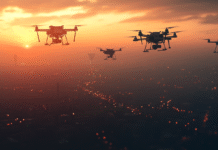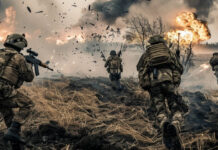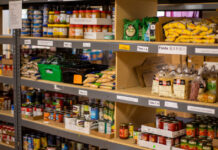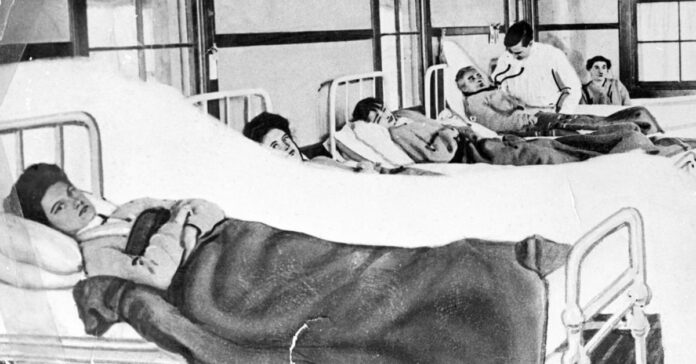
One benefit of our modern society that few ever stop to think about, especially after the recent pandemic, is the lack of deadly diseases that plagued humanity for all but the last 80 years. Today we are going to look at the chances these diseases will return during a post-SHTF environment, and how a prepper can avoid or treat them. (Please note that I am not a doctor. Please see the disclaimer at the end of this article.)
Why Worry About Diseases?
As we are scrambling to find affordable food and energy, why should we worry about uncommon diseases? Because when society collapses, many of the diseases will come back. Venezuela is a recent example. When their economy collapsed, modern medicines, diagnostic equipment, and even simple medical supplies disappeared. Childbirth became more dangerous and many treatable diseases went untreated. The day may come where we face the same situation.
I’ve written in the past how a “lights out” disaster that knocks out all utilities would result in us living like we did in the 1880s. Below are a couple of statistics going back to 1880.
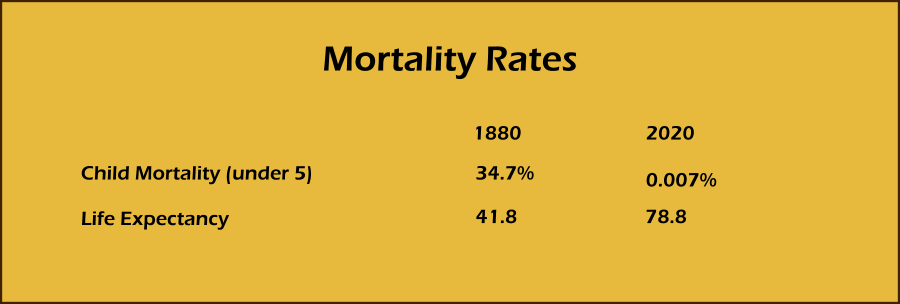
Today, 993 out of every 1000 children will live until at least age five. Imagine being teleported back to a time when the odds of your newborn dying before age five are one in three. That’s in addition to the number of women and infants who will die during childbirth without modern hospitals.
In the 1880s, the average life expectancy was 41.8. Today, it is almost twice that. In the 1880s, I’d be an old man. Today, I can look forward to a couple more of decades of life.
The data is worse if you go back to 1800, but I don’t think a massive calamity will knock us back that far. We will still have our knowledge, and knowing such things as radios, antibiotics, and internal combustion engines once existed will mean we should not have to start back with the pony express, bleeding patients to release “deadly humors,” and steam engines. While you and I may not know how to make radios and internal combustion engines, at least we will know they are possible. We will rebuild and reconstruct using the skeletal remains of our current society rather than starting with a blank slate.
Post-SHTF Diseases
One of the biggest reasons disease was more rampant in the 1800s is a lack of hygiene and no knowledge of germ theory and how the two intertwine. Louis Pasture developed modern germ theory in the 1860s. It may have been discussed in Salons in Pairs, London and Boston, but it wasn’t practiced or generally accepted in the United States at that time. Today, we know to wash our hands (and other parts), clean wounds, store and cook food thoroughly, and how to treat an infection. We also know not to drink dirty, unpurified water, and to properly dispose of our feces. Post SHTF, these will be critical things to practice because untreated water will make you sick, and human sewage carries multiple deadly diseases. This brings us to the low hanging fruit, diseases we can prevent fairly easily, namely…
Waterborne and Food-borne Illnesses
Years ago, I had a case of campylobacter, a disease caused by consuming under-cooked chicken. When I returned to work after a week off, I had lost so much weight, no one doubted I had been sick. I don’t know what I would have done without modern diagnostic testing and antibiotics.
Other common food-borne illnesses include Salmonella, Listeria, Dysentery (shigellosis), and e-Coli, although the list goes on. Proper storage and preparation of food is critical to kill these germs, many of which are naturally found in the guts of livestock and wild animals. Without modern refrigeration, food will spoil faster and the rates of food poisoning will increase. If you are living in a post-SHTF situation without electricity and refrigeration, you will need to eat or preserve your food before it goes bad, and try not to leave leftovers in which disease might build up between one meal and the next.
Giardia, Cyclosporiasis, Cryptosporidium, and E. Coli are illnesses you can pick up by drinking unpurified surface water. Many filters and other purification methods will eliminate or greatly reduce your chance of getting these illnesses. My advice is to have multiple ways to filter or purify your drinking water, both in your base of operations and when on the road.
Taking precautions to avoid eating undercooked food, drinking contaminated water, and good personal hygiene will be key to avoiding diseases in a post SHTF situation. Let me also note that while soap is a good thing to stockpile in your prepping supplies, if you have no soap, don’t let that stop you. Washing dirty hands with clean water is far better than having dirty hands.
Let’s move beyond the low hanging fruit…
Cholera
Cholera is an acute form of diarrhea that can kill within hours if untreated and is especially deadly in children. It is not unusual for it to crop up in third world countries and heavily populated areas after a natural disaster that disrupts regular sanitation practices. It is generally caused by people drinking water that is contaminated by human feces. This is certainly a potential scenario after a global or country-wide disaster that disrupts utilities and leaves people with limited sanitation resources and untreated water.
Treatment is via prompt and repeated use of oral rehydration solutions. In other words, drinking rehydration solutions to prevent dehydration until the illness passes. You can buy an oral rehydration solution or make your own. I know people who stockpile Pedialyte or sports drinks for this purpose. We prefer to stock rehydration powders to mix with purified water because they take up less space and have a longer shelf life. Your local drug store should carry these, but do a little research to find the brand or formula you think would work best.
Besides being useful during a cholera outbreak, rehydration solutions are good for treating any diarrheal episode or should someone become dehydrated via excessive exercise or heat exposure. You should have them in your prepper first aid kit.
Typhoid Fever
Another disease usually associated with third world countries that could see a renaissance after a disaster is Typhoid Fever This disease was common in the U.S. prior to the development of public sewage systems. You may recognize the name “Typhoid Mary,” a restaurant worker who unknowingly caused an outbreak in New York City in the early 1900s while she remained symptom free.
This is yet another disease that can be spread by food and water that has come into contact with an infected person. Although less likely to break out in a post-SHTF situation than Cholera, if someone has been traveling internationally, it is possible they could bring it home.
Typhoid is a serious illness of which diarrhea is one of the more minor symptoms. It usually includes a fever that grows very high (over 104) and other symptoms not dissimilar to a stomach flu. Typhoid can lead to an extremely swollen stomach and, if untreated, may result in perforations of the colon, which is usually fatal without surgery. Many Typhoid infections are resistant to lesser antibiotics such as ampicillin, so it is best to treat it with the antibiotics ciprofloxacin or azithromycin. Whether or not you come across Typhoid, it’s a good idea to have these and other antibiotics in your emergency first aid kit.
To be continued tomorrow in Part 2.
Disclaimer
Please note than I am not a doctor or medical professional and this article is not medical advice. The above information is provided to alert you to what may happen during a hypothetical disaster and to encourage you to become better informed and prepared. If you or someone you know is seriously ill or may have contracted a food-borne or waterborne illness, please seek prompt medical attention.


